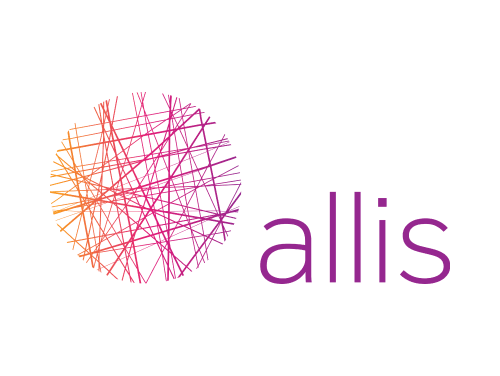Shelf Audit - Meaning, Benefits and Best Practices
Our Clients
Committing to the success of our clients around the world
Shelf audits play a crucial role in the retail industry by ensuring that products are optimally placed, available, and accurately represented on store shelves. This comprehensive guide explores the meaning, benefits, and best practices of shelf audits, providing insights into their historical context and technological advancements.
Shelf Audit Meaning
A shelf audit involves examining the arrangement and presence of products on retail shelves. It includes checking for correct product placement, stock levels, pricing, and promotional displays. The goal is to ensure that products are positioned to maximize visibility and sales while maintaining compliance with planograms and other merchandising standards.
Historical Context of Shelf Audits
Shelf audits originated during a period of economic growth in France, where consumerism and supermarkets began to thrive. Increased competition among brands led to the development of more precise order management systems. Initially, shelf audits were used for order taking, with supermarkets asking suppliers to analyze shelves and stock to place accurate orders. Over time, the scope of retail responsibilities evolved, and shelf audits became integral to maintaining product visibility and availability.
Comparison with Other Retail Audits
Shelf audits are distinct from other types of retail audits, such as financial audits or compliance audits, as they focus specifically on the physical aspects of product placement and inventory on store shelves.
Benefits of Shelf Audits
Regular shelf audits reduce inventory discrepancies by ensuring accurate stock levels and minimizing the risk of stockouts and overstock situations. Accurate inventory management leads to better inventory turnover rates, reducing carrying costs and increasing profitability.
Shelf audits ensure that products are available when customers need them, enhancing the shopping experience and increasing customer satisfaction.By ensuring products are correctly placed, shelf audits improve store layout and navigation, making it easier for customers to find what they need.
Optimizing product placement through shelf audits increases sales by making high-demand products more visible and accessible to customers.Effective implementation of promotions, verified through shelf audits, boosts sales figures by attracting more customers and increasing purchase frequency.
Shelf audit reports provide valuable insights into product performance, helping retailers make informed decisions about inventory management, product placement, and promotional strategies. Using data from shelf audits, retailers can adjust their business strategies to improve efficiency, enhance customer experience, and increase sales.
Shelf audits help reduce waste and overstock costs by ensuring accurate stock levels and preventing excess inventory. By optimizing shelf space through regular audits, retailers can maximize product visibility and sales while minimizing wasted space.
Conducting a Shelf Audit
Steps to Perform a Shelf Audit
- Step 1 Preparation and Planning Effective shelf audits require thorough preparation and planning, including defining audit objectives, selecting audit tools, and training staff.
- Step 2 Data Collection Methods Data collection methods for shelf audits include manual counting, barcode scanning, and image recognition technologies. In the short and long term, image recognition is the latest and best-performing technology for the retail industry.
- Step 3 Analysis and Reporting After data collection, the next step is analyzing the data to generate reports. These reports provide actionable insights for improving shelf management and overall retail operations.
Technologies for Shelf Audits
Mobile Applications
Mobile applications streamline shelf audits by enabling real-time data collection and analysis. These apps improve efficiency and accuracy in audit processes.
RFID and Barcode Scanning
RFID and barcode scanning technologies enhance the accuracy of shelf audits by providing precise data on product presence and stock levels.
Shelf Audit Software
Shelf audit software offers comprehensive solutions for managing and analyzing audit data. These tools provide detailed reports and insights to help retailers optimize shelf management.
Challenges in Shelf Audits
Common Issues Faced During Shelf Audits
Inconsistent Data Collection
Inconsistent data collection can lead to inaccurate audit results, making it difficult to identify and address issues effectively.
Resistance from Store Staff
Store staff may resist shelf audits due to the perceived additional workload. Effective communication and training can help mitigate this resistance.
Solutions to Overcome Challenges
Training and Support
Providing adequate training and support to staff ensures they understand the importance of shelf audits and are equipped to perform them effectively.
Use of Advanced Technologies
Using advanced technologies such as image recognition and mobile applications can streamline shelf audits, making them more efficient and accurate.
Case Studies
Success Stories of Shelf Audits in Retail
Examining success stories of shelf audits in retail provides valuable insights into best practices and strategies that can be applied to other businesses.
Lessons Learned from Failed Shelf Audits
Analyzing failed shelf audits reveals common pitfalls and mistakes that can be avoided. Understanding these failures helps in developing strategies to mitigate risks and improve operations.
Expert Insights
Quotes and Advice from Retail Industry Experts
Interviews with retail industry experts provide valuable perspectives on current trends, challenges, and future directions in shelf audits.
Future Trends in Shelf Audits
Staying updated on the latest trends in shelf audits is crucial for staying competitive. Current trends include the use of artificial intelligence, advanced image recognition technologies, and the increasing importance of real-time data.
Success Stories
 Allis
Allis
 Coca Cola
Coca Cola
 Perfetti Van Melle
Perfetti Van Melle
 Nestle
Nestle
 Danone
Danone
 Mars
Mars
 Tarweej
Tarweej
 TOP 3 Retail Chain
TOP 3 Retail Chain
 Global Retail Corporation
Global Retail Corporation
 World’s Leading Manufacturer
World’s Leading Manufacturer
 Global FMCG Brand
Global FMCG Brand
 Leading Food Manufacturer
Leading Food Manufacturer
 Global Food Manufacturer
Global Food Manufacturer
 Global Coffee Manufacturer
Global Coffee Manufacturer
 Major Spirits Producer
Major Spirits Producer
 Global Pharmaceutical Brand
Global Pharmaceutical Brand
 Leading Food Manufacturer
Leading Food Manufacturer
 Global FMCG Brand
Global FMCG Brand
 Leading Food Manufacturer
Leading Food Manufacturer
 Leading Spirits Producer
Leading Spirits Producer
 Major FMCG Brand
Major FMCG Brand
 Major Coffee & Tea Manufacturer
Major Coffee & Tea Manufacturer



















